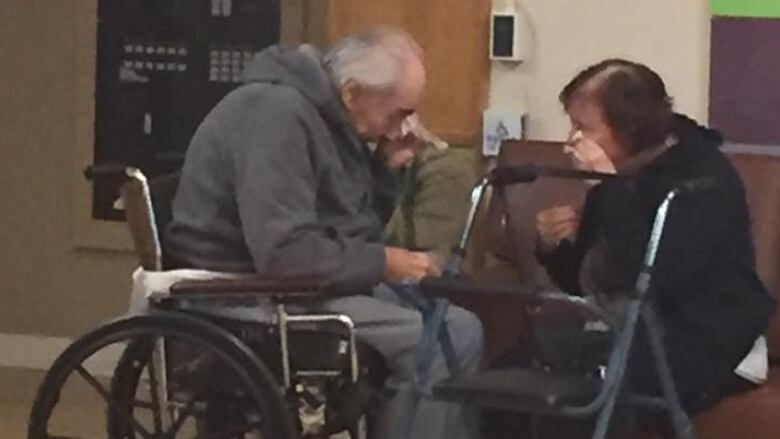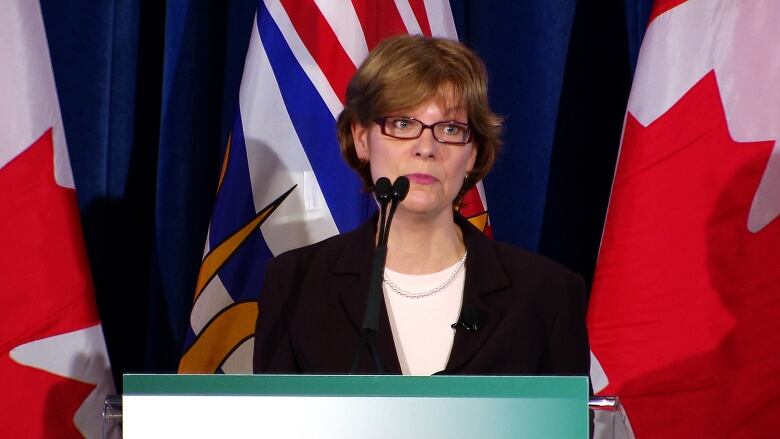'How difficult can it be to put them in the same place?'
Confusion and heartbreak too often outcome of disconnect between system and those who need it most

If you need evidence of just how inhumane a bureaucracy can be look no further than the image that made its way around the world this week of a sobbing elderly couple forced to spend the twilight days of their 62-year marriage apart.
Wolfram Gottschalk, 83, who has dementia and lymphoma, dabs at his eyes as 81-year-old Anita Gottschalk does the same. For now, one facility can't be found to accommodate their different levels of need.
Anyone can see themselves orsomeone they love in the picture. Which is likely why the couple'sstoryappeared in newspapers and television screens from London to Los Angeles.
Valerie Comba saw her own parents in that photograph.Literally.Like the Gottschalks, the Kelownawoman's parents were also living in separate care facilities when they went to the media in 2014.
Her father needed a higher level of care than her mother. The family found themselvesfrustrated by red tape, rules andmeetings with officials whose hands were tied.
And then, suddenly, when the story hit the headlines, things changed. With a little bit of shuffling,ingenuity and willpower, spacewas found in the care facility where they live to this day.
"It's really hard, and I've heard that story so many times talking to other people that have been in that situation," Comba says.
"They say you have to create the biggest damn stink that you possibly can, and you have to phone them every day and you have to bug the heck out of them or you will get nothing."
A lack of creativity?
It's a sad commentary on the state of the public health system in 2016 to say that if you want to get something done, you have to do it yourself with the help of the media's million-watt megaphone, of course.
Even B.C. Seniors Advocate Isobel Mackenzie doesn'tdispute the role of vocal agitation for families when it comes to getting action.
But she says the tragedy of the Gottschalks' situation also highlights one of the major flawsin the system: a lack of creativity.

Might space be found for an extra bed in a single room? Could Wolfram, who requires more care, try living in Anita's facility nonetheless, with the benefit of having a spouse as an added caregiver offsetting the drop in services?
Mackenzie suggests an approach which begins with the question "What do we have to do to get this couple together as quickly as possible?"
But that's not the way the system usually works.
"We're trained to be risk-averse. Limit risk. That's the lens we view everything through, and there's consequences for that," she says.
"What I think has touched all of us is we either see our grandmother orparents or frankly, ourselves, and we don't want to be separated. And so we see them being torn apart, and a lot of people think 'How difficult canit be to put them in the same place?'
"Well, actually, if you'regoing to follow all the rules and processes we have, its fairly difficult."
Damned if they do, damned if they don't
This is not to dump on Fraser Health, which as Mackenzie points out is in a "damned if they do, damned if they don't" position; if they do bend the rules and something goes tragically wrong, they risk headlines for other reasons.
In a statement, health authority spokeswoman Tasleem Jumasays officialsmet with the family face-to-face last Friday and are hoping to have a solution in the next few weeks.
In Facebook posts, the Gottschalks'granddaughter has disputed the health authority's claims to be working closely with the family. Ashley Barytik claims it wasn't until her photograph went viral that the phone started ringing.
She's now hoping to use the attention to highlight the need for moregovernment-subsidized beds.

To that end. Mackenzie released a housing report in 2015 suggesting that while a "possible" shortage exists, the bigger problem is getting seniors beds at the facilities where they actually want to be.
At present, people going into residential care from hospital are placed in the first available bed, whether in a locationthey want or not.
Mackenzie recommends that facilities with open spacesdraw first instead from a list of people already in care who have chosen thehome as their preferred choice. The person in hospital would then take theold space and transfer from there to a preferred bed when one becomes available.
She also recommendsthat residents and families be regularly advised of how many people are ahead of them on the waiting lists for their preferred facilities and how many vacancies occur on average.
Your rights: 'health, safety and dignity'
Mackenzie's recommendations speakto a major element of frustration which ultimately leads people like Comba and the Gottchalks' granddaughter to the media: communication.
Comba says she didn't have time to hold a job and advocate on behalf of her parents full time. The process can be an endless round of phone calls, web pages,raised voices and suggested avenues of complaint with no guarantee that anyone will ever get back to you.
But here's something worth knowing: B.C.'s Community Care and Assisted Living Act actually contains a Patient's Bill of Rights. Itshouldbe prominently displayed at any care facility.
Enshrined into law is an adult person's right "to be treated in a manner, and to live in an environment, that promotes his or her health, safety and dignity."
True, that sounds nebulous enough to drive a truck through.
But it may also provide a perfect point of entry for the next family who find themselves desperate to keep their grandparents together.
After all, it's hard to keep your dignityintactwhen the world can see you weeping.












_(720p).jpg)


 OFFICIAL HD MUSIC VIDEO.jpg)
.jpg)



























































































